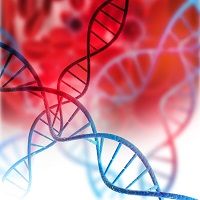Article
Impact of Genetic Variations on Schizophrenia Treatment Effectiveness
Author(s):
Safe, effective treatments for schizophrenia are well-established in the United States and worldwide, with several second-generation antipsychotics (SGAs) approved for use. But earlier schizophrenia studies have shown that several single nucleotide polymorphisms (SNPs) – the genetic variations that can underlie differences in susceptibility to disease – are overexpressed in Caucasian patients with schizophrenia but not in their Chinese counterparts, and vice versa.

Safe, effective treatments for schizophrenia are well-established in the United States and worldwide, with several second-generation antipsychotics (SGAs) approved for use. But earlier schizophrenia studies have shown that several single nucleotide polymorphisms (SNPs) — the genetic variations that can underlie differences in susceptibility to disease – are overexpressed in Caucasian patients with schizophrenia but not in their Chinese counterparts, and vice versa.
A recent meta-analyis in Neuropsyciatric Disease and Treatment posed the question: Would extended release paliperidone, one among several first-line treatments for the condition, be as safe and effective, or perhaps more so, in a Chinese population? The study authors noted that the incidence of paliperidone ER-related extrapyramidal side effects (EPS) in Chinese patients experiencing an acute exacerbation of schizophrenia has been reported to be much higher than in patients from other countries.
“Despite mounting evidence that patients in People’s Republic of China are different, no meta-analysis comparing paliperidone ER with other SGAs in Chinese patients with schizophrenia has ever been published,” the authors noted.
The analysis aimed to compare the efficacy, safety, and acceptability of paliperidone ER with that of other SGAs in Chinese patients with schizophrenia in the hope of providing reference information for future studies and clinical application. But beyond the implications for Chinese patients suffering from schizophrenia, the results of this analysis point to a tantalizing avenue of potential discover for schizophrenia patients. If the SNPs associated with disease prevalence and severity can be identified, clinicians can theoretically seek customized treatment based on the DNA of individual patients.
In total, 97 English studies were retrieved from PubMed, Medline, Embase, and the Cochrane Library, while 818 Chinese studies were retrieved from Chinese healthcare sources. After duplicates were removed, 188 records were considered valid. A further 128 articles were excluded after initial screening of titles and abstracts. Another ten studies were also excluded for lack of relevant data, not including a treatment duration of four to 12 weeks, or not being a randomized, controlled trial.
The response rate for paliperidone ER was significantly higher than that of other pooled SGAs, which included clozapine, olanzapine, aripiprazole, and quetiapine. The incidence of extrapyramidal symptoms on paliperidone ER was comparable with other pooled SGAs and significantly lower than that of risperidone (RR 0.56, 0.41—0.77) but higher than that of olanzapine (RR 1.88, 95% CI 1.05–3.36).
“Our results demonstrate that paliperidone ER is efficacious, safe, and well accepted when compared with other oral SGAs in the treatment of patients with schizophrenia, with a relatively high response rate, a low incidence of adverse events, and [low] odds of withdrawal for any reason,” the study authors concluded.
The team pointed out a couple of limitations, including the fact that the number of studies enrolled in each subgroup analysis was relatively small and that several studies reported administration of anti-EPS drugs and benzodiazepines to control adverse events, which may have affected the accuracy of the analysis.




